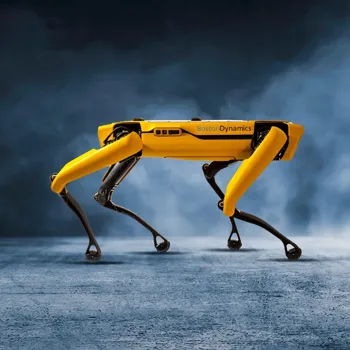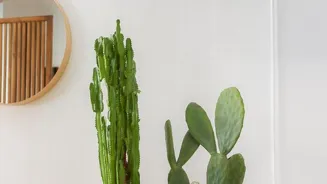Discover how biomimicry is transforming technology with nature's genius. Read on to unlock a world of innovation
From the humble spider to the soaring eagle, nature has spent billions of years perfecting
its designs through evolution. Now, engineers and scientists are looking to this natural world for inspiration, leading to a wave of innovation known as biomimicry.
Biomimicry, at its core, is about learning from nature's solutions to solve human problems. It's not just about copying nature, but about understanding the underlying principles and applying them to create sustainable and efficient technologies.
This approach is revolutionizing various fields, from architecture and materials science to robotics and medicine. The results are nothing short of amazing; we're talking tougher materials, more energy-efficient designs, and even robots that move with the agility of animals.
Biomimicry is gaining momentum because it addresses a critical need: developing sustainable solutions that are in harmony with the environment.
Scientists mimic nature to create advanced materials for diverse applications
One of the most compelling examples of biomimicry is in the field of materials science. Scientists are studying the structures of butterfly wings and the strength of spider silk to develop new, high-performance materials.
Butterfly wings, for instance, have microscopic structures that create vibrant colors without the use of pigments. This principle is being applied to create paints and coatings that are non-toxic and energy-efficient to produce. Spider silk, on the other hand, is incredibly strong and flexible.
Researchers are working to replicate its properties to create materials for bulletproof vests, medical sutures, and even bridge cables.
The advantage of biomimicry in materials design is that it often leads to materials that are lightweight, strong, and sustainable, reducing our reliance on traditional, resource-intensive manufacturing processes.
These innovations have the potential to transform industries by offering eco-friendly and highly effective alternatives.
Architects using biomimicry for eco-friendly, energy-efficient buildings inspired by nature
Architecture is another area where biomimicry is making significant strides. Architects are drawing inspiration from natural structures like termite mounds and honeycomb to design buildings that are energy-efficient and climate-responsive.
Termite mounds, for example, have intricate ventilation systems that maintain a stable temperature inside, even in extreme heat. Architects are applying these principles to design buildings with natural ventilation systems, reducing the need for air conditioning.
Similarly, the honeycomb structure, known for its strength and efficiency, is being used to create lightweight and durable building materials.
By mimicking nature's designs, architects can create buildings that are not only aesthetically pleasing but also environmentally sustainable and comfortable for occupants. This approach promotes a more harmonious relationship between the built environment and the natural world.
Robotics advances through biomimicry, creating agile and adaptable robots inspired by animals
The field of robotics is also being revolutionized by biomimicry. Engineers are studying the movements of animals to create robots that are more agile and adaptable. For example, researchers have developed robots that mimic the movements of cheetahs, cockroaches, and even snakes.

These robots can navigate challenging terrains, perform delicate tasks, and even assist in search and rescue operations. Inspired by the gecko's ability to climb walls, scientists have created adhesives that allow robots to grip surfaces without the need for suction cups or glue.
Biomimicry in robotics leads to robots with improved mobility, efficiency, and dexterity, which opens up numerous possibilities for automation in various industries.
From manufacturing to healthcare, these bio-inspired robots are poised to transform the way we work and interact with the world around us.
Medicine benefits from biomimicry for innovative treatments and medical devices
Even the field of medicine is benefiting from biomimicry. Scientists are studying how the human body heals itself to develop new therapies and medical devices. For instance, the way our blood clots is being mimicked to create new types of bandages that can stop bleeding quickly and effectively.
Researchers are also drawing inspiration from the structures of bones and tissues to develop biocompatible materials for implants and prosthetics.
By understanding how nature repairs and regenerates, doctors and researchers can develop innovative treatments that promote faster healing and improve patient outcomes. These advances are particularly relevant in areas like regenerative medicine and tissue engineering.
Biomimicry holds considerable promise for creating more effective and less invasive medical solutions.
Biomimicry in India for sustainable solutions to environmental challenges
In India, biomimicry is gaining traction as the country seeks sustainable solutions to its growing environmental challenges. Several research institutions and universities are now investing in biomimicry research, focusing on areas like water conservation, waste management, and renewable energy.
For instance, researchers are studying the desert beetle's ability to collect water from fog to develop new water harvesting technologies. Architects are looking at traditional building techniques that use natural materials and passive cooling to create sustainable housing solutions.
By embracing biomimicry, India can leverage its rich biodiversity and traditional knowledge to develop innovative solutions that address its unique environmental and developmental needs. This approach holds the key to a more sustainable and prosperous future for the country.













